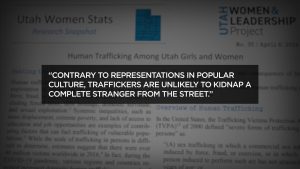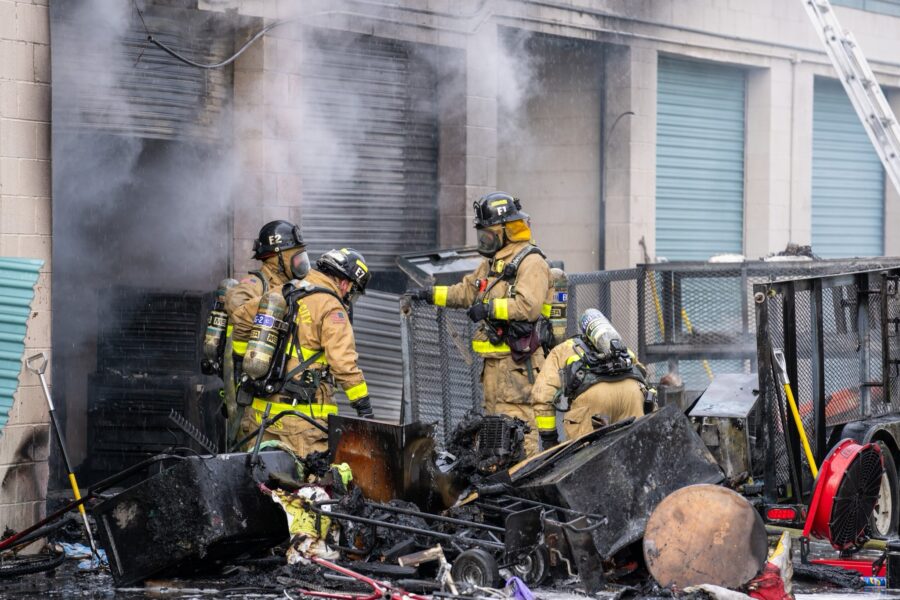Report: Utah can do more to prevent human trafficking and help survivors
Apr 6, 2022, 7:00 PM | Updated: Jun 20, 2022, 12:47 pm
LOGAN, Utah – A new report from Utah State University’s Utah Women and Leadership Project details how human trafficking is happening in Utah and what efforts the state can take to prevent the crime.
“And contrary to what we hear in popular culture, traffickers are unlikely to kidnap a complete stranger from the street,” said a prepared statement from the report’s lead author, Lindsay Gezinski. “The research shows us that traffickers may be acquaintances, friends, romantic partners, or family members.”
Gezinski said victims can also be lured by fake job advertisements and promises of employment.
The report looked at more than 50 sources of information to better understand how human trafficking is happening among Utah girls and women.
“Despite public perceptions that human trafficking is only an international problem, it occurs in the United States and even within urban and rural areas of Utah,” the report said.
One recent example the report cited was the February 2021 arrest of six people in connection with human trafficking and prostitution at massage parlors in Utah County.
According to the report, in 2020, the National Human Trafficking Hotline received 182 contacts about 64 reported human trafficking cases in Utah.
“Of the 182 tips, 64 were considered evidence for potential human trafficking, most of which were sex trafficking (66%) in illicit massage or spa businesses, in other venues, or via pornography,” the report said. “Labor trafficking accounted for 17% of probable trafficking situations, 5% combined both sex and labor trafficking, and 13% did not specify trafficking type.”
In 2019 the hotline identified 157 victims along with 39 traffickers in Utah.
“Traffickers exert control through a variety of tactics, including intimidation; physical, sexual, and verbal abuse; inducing substance abuse; withholding earnings; and threatening reports to immigration enforcement,” the report said.
The Asian Association of Utah, which assists survivors of all ethnicities, said it helped 251 human trafficking victims during 2019 and 2020. The association also reported a 39% increase in people served by its Trafficking in Persons Program between 2018 and 2020, according the report.
The report said figures from the hotline and the association likely underestimate the prevalence of human trafficking in Utah.
One of the authors of the report told KSL TV that human trafficking doesn’t discriminate and can happen in a variety of circumstances and locations
“We do often think of massage parlors and hotels and those kinds of things,” said Dr. Susan Madsen, director of the Utah Women and Leadership Project. “But human trafficking also occurs in domestic work, agriculture, mining, fishing, factory work, restaurants and even construction.”
The report details how certain circumstances can increase a person’s vulnerability to human trafficking, including poverty, lack of access to education and employment and being separated from one’s family.
“Trafficked persons may be girls, boys, women, men, and non-binary people who are diverse with respect to race, ethnicity, nationality, sexual orientation, and socioeconomic status, among other factors,” the report said. “However, those individuals who are particularly vulnerable to human trafficking include immigrants, BIPOC (black, indigenous, and people of color), LGBTQ+, and those who live with disabilities.”
The report said human trafficking prevention measures should include school and community education.
“Students should be able to recognize the signs of human trafficking, including grooming for the purpose of exploitation, and they should know how and where to get help,” the report said.
In addition, the report called for better recognition of the problem and better support for survivors.
“A multi-pronged approach that targets prevention, identification, and intervention in a variety of settings and utilizes a coordinated community response is necessary to eliminate human trafficking in Utah,” the report concludes. “With coordinated community responses and partnerships between government and organizations, Utahns can help save lives and change victims’ futures.”















